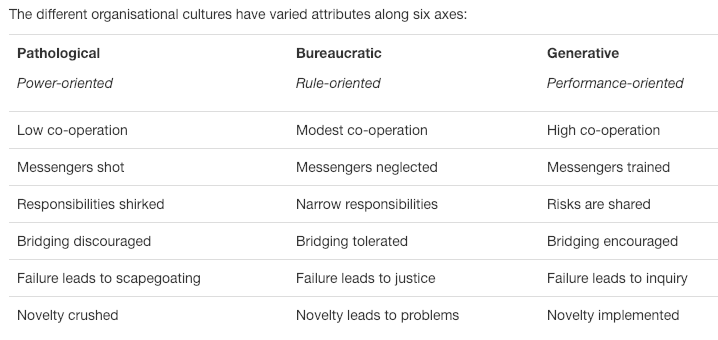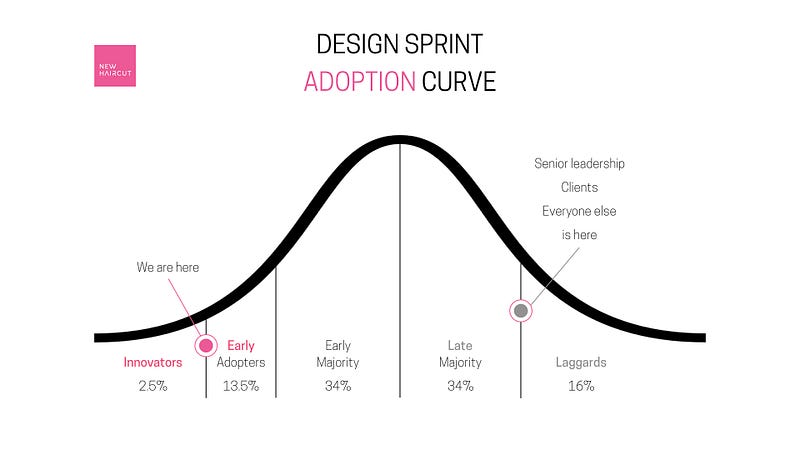Somewhere between vulnerability and design thinking
My story of discovering, first-hand, how important psychological safety is to teams using design thinking and design sprints to spur innovation. And some simple techniques for you to consider in your next sprint.
I sat up from the exercise mat I was laying on and pushed myself off the gym floor. I ran-walked over to the window sill where my jacket, water bottle, and phone sat. I anxiously fumbled to unlock my phone and tap the rewind button on the audio book, Dare to Lead, I was listening to so I could hear the last part one more time.
The author, Brené Brown, was reciting a thought she always imparts on the leadership teams she coaches at the very start of their engagements…
“What if anything about the way that people are leading today needs to change in order for leaders to be successful in a complex, rapidly changing environment where we’re faced with, what seems like, intractable challenges and an insatiable demand for innovation?
While the question is complex, there was one answer that repeated…
We need braver leaders and more courageous cultures.”
A chill ran down my back. In that moment, I was equally excited and terrified by 2 thoughts:
1) Exciting: the overwhelming realization that the intersection of my design thinking work and Brené’s vulnerability work is the path to leading fulfilling work for people and creating true innovation for companies.
2) Terrifying: the story I was telling myself in that moment — I’m not qualified to do this work, and even if I am, people in the business world only care about business results.
Maybe some, but just as my inner critic was about to run rampant, like clockwork, Brené narrated the perfect Marcus Aurelius quote to silence the critic in my head…
What stands in the way, is the way.
Holy shit. Another chill. This must happen, I thought.
For the first time in as long as I can remember, I stopped my workout short and scurried out of the gym. I sat in my car in the parking lot, furiously scribbling to try and keep my hand at pace with the ideas, words, and diagrams bubbling up.
I had been moved by and learning from Brené for 3 years, incorporating bits and pieces of her research into my work. But only today did I experience the validation of how interconnected our 2 worlds are…
Without Brené’s work, teams that are trying to innovate might never develop a culture of leaders that trust and hold one another accountable.
Without my work, teams that are pursuing trust and daring leadership might never procure the methods that enable them to innovate and co-create together.
Encountering fear in the workplace
Over the years I’ve met so many brave souls. I’m talking about people working inside large corporations who are pushing for new and better ways of designing products and services, but facing cultural setback after setback.
In reading Barry O'Reilly’s Unlearn, I learned about Ron Westrum’s 3 Cultures Model that organizes companies in 1 of 3 domains:
Pathological. Dread and uncertainty drive people to keep their heads down for fear of being labeled a failure by those with power.
Bureaucratic. There’s autonomy and trust, but only within the team or department. At the company level, things are done based on pre-defined rules, developed by the few with power.
Generative. Because trust is certain, people don’t only think freely, but follow ideas and methods that naturally bring out their best performance. That performance then inspires the next generation of people + big ideas to flourish, and so on.

The bad news is that the overwhelming majority of us in the corporate world, work within pathological or bureaucratic companies. Worse, the companies that need to change the most, are the same ones where change is treated as a threat.
What results, are teams unwilling to trust.
Teams where power usurps performance.
Teams where creativity is strangled by a fear of failing.
To overcome all of this requires tremendous courage — more than you and I signed up when accepting our job offers.
And so instead of facing the storm, we duck and cover. We choose safety over courage. We act human.
Mistrust in design sprints
Because I’m in the business of training groups on design sprints, it took me a couple years before I conceded that not all cultures are ready for a design sprint — regardless how perfect the opportunity, market conditions, and methods. At the end of the day, the people in the room will make or break your sprint’s success.

Before I made the connection between psychological safety and creative work, my design sprints could be self-described as remarkably average.
My typical story of working with teams in the early days looked like the this:
A design or product leader who’s been following my work and is ready to reboot how their teams work, inquires to get my help with a design sprint.
I evaluate their readiness based on business case, identified problem, research, and team expertise.
I run a design sprint training session to introduce the process and tools. (Humbly speaking) the team has loads of fun, they bond, and they’re hands-down sold on the framework.
With the success of the training, I return to facilitate a problem framing workshop + design sprint on an actual business opportunity.
During the sprint, the excitement dies off when the solutions generated are the same old ideas they’d been talking about for years. The fun and light-heartedness displayed during training is replaced with fear, ego, and power; e.g. a marketing VP silences a junior engineer’s wild idea, blindly claiming, “our users have never asked for that so let’s not waste time there.”
The core team falls in love with the overall process but feels something is missing — retreating back to the safety of their existing tools.
Leadership is underwhelmed by the results.
Due to outcome bias, future design sprints are held under tight scrutiny due to the high upfront investment of resource while lacking the anticipated ROI.
What happened?
What stands in the way, is the way.
Standing in the way of great design and innovation is not another shiny tool. It’s the hard work of building trust, repairing conversations, and leveling the field of power so that everyone in the room feels as equally safe failing, as they do winning.
There cannot be digital transformation without cultural transformation, first.

Materials found within New Haircut’s Design Sprints // DEEP DIVE training workshops.
Or as Michelle Poole said to me once, “We can’t get to the doing without first working on being.”
Bringing psychological safety into design sprints
While we can’t leapfrog from pathological culture to generative overnight, the changes required are small, so long as you’re willing to be persistent and patient.
Yes, everyone in the room who’s licking their chops to do a design sprint will wonder why you’re talking about safety, courage, shame, and accountability. Stick with it. Share these stories with them.
And then begin, slowly. Try introducing a few subtle exercises upfront. You can float them at the beginning of a design sprint, or otherwise, a meeting in which a group of people are expected to work together and accomplish something.
Here are a two of my favorite eye-openers:
1. Vulnerability statement
Source: Brené Brown | Dare to Lead
Design sprints are not only new for most, but the expectations are high. That means the people joining will feel vulnerable to potential criticism of their ideas.
Instead, make it safe to be vulnerable by having each person silently and individually complete the following 2 sentences:
I grew up believing that vulnerability (or shame) is ________.
In order to feel safe, I need ________.
As a facilitator, I’ll often write an example on the whiteboard, first, in order to model the behavior. Other times, if I’ve been previously coaching 1 of the leaders in the group, I’ll ask them to model it.
2. Yes, but… Yes, and…
Source: Daniel Sillman’s Facilitation Masterclass
The words we use are powerful, especially during high stakes work like design sprints. Choosing even one wrong word can create an atmosphere that’s hesitant, while the right word can establish trust and community.
A perfect game to demonstrate this point is Yes, but… Yes, and… It’s a simple eye-opener that proves the impact our words have on others.
Persistence
Will doing any of these isolated exercises 1 time change someone, let alone an organization? Of course not. But with each exercise completed, you’ll gain the confidence to keep going, inspiring others to do the same.
At first, change will resemble 1 other person demonstrating empathy and care toward another. With enough practice, their team will be the first to demonstrate modest amounts of psychological safety. The results will encourage similar practices from other people and teams who want the same. And with time, new experiences create new behaviors that simply become the way you work.
Wrapping up
What’s inspired me most about this work is the realization that the cure to disconnection and mistrust is building empathy with one another… the very same empathy we’re trying to cultivate with our users so that we can create products and services that meet their needs.
Like you, I came into design sprints looking to build better products and services, faster. That’s still certainly a goal of this work.
But as I shared in this conversation with, coach, Alexis Robin - with each sprint I run, team I train, and leader I coach, I see the same fear, mistrust, and disconnection that holds good teams back from being great.
When they push through the scary, awkward, and squishy human stuff, the business results come pouring over. Or as my coach told me once…
Discomfort is the price of admission to a meaningful life.
Design sprint training + facilitation
Our design sprint + problem framing training courses have been designed based on the the spirit and ideas shared in this article. It’s meant to help brave teams who are willing to commit to the hard work of rebuilding trust + connection, so that they can achieve innovation.
You can also find more info about our design sprint facilitation services.


